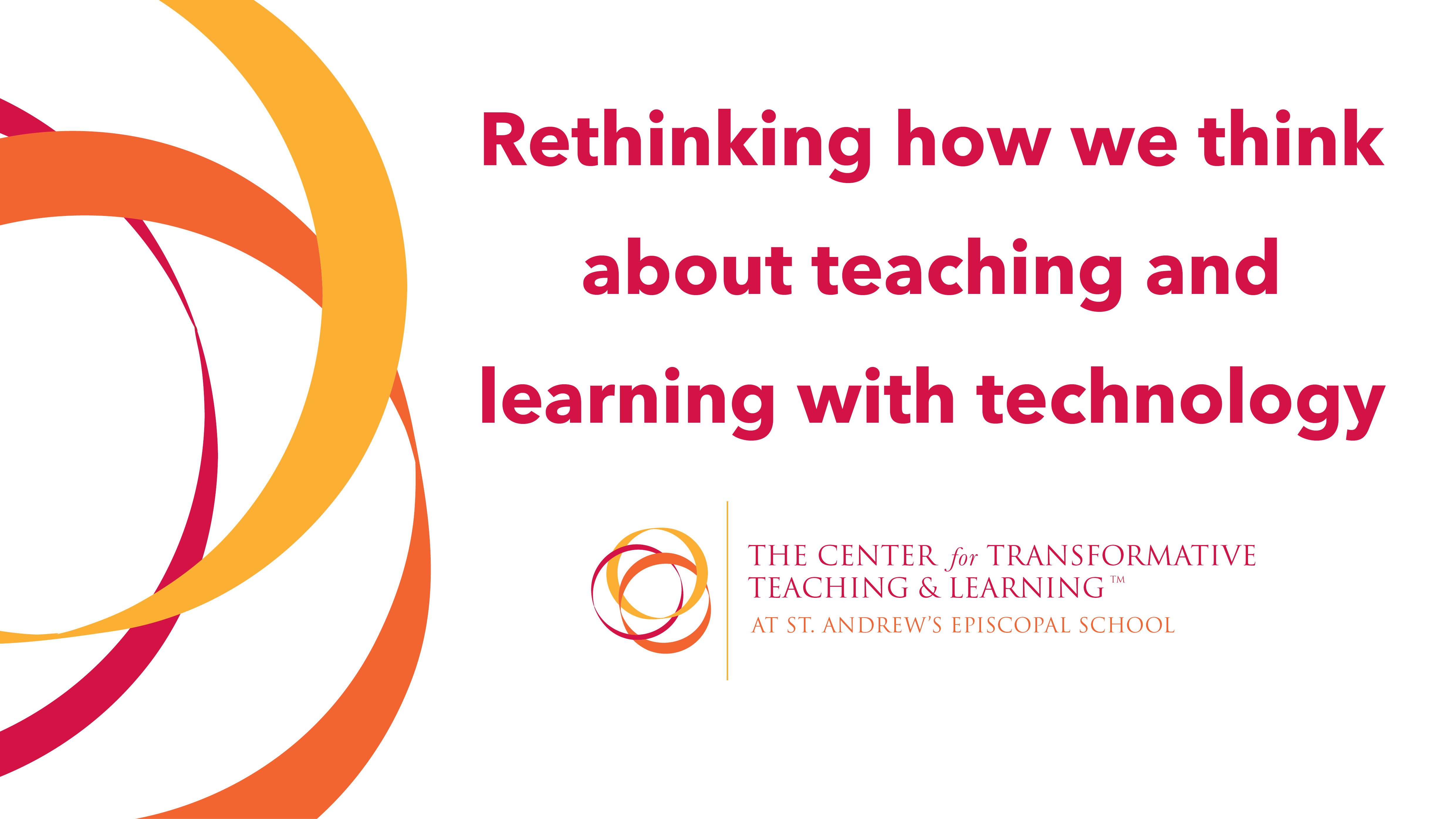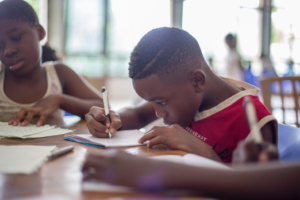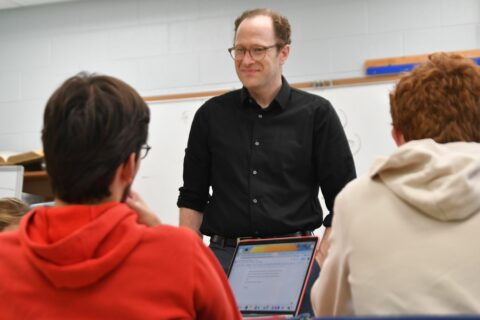By Glenn Whitman
In the climactic scene of “Indiana Jones and the Last Crusade,” the lead character, played by Harrison Ford, finds himself making a life or death choice. His father, played by Sean Connery, is fading away from a gunshot wound and only the liquid in the Holy Grail can save him. The challenge for the younger Dr. Jones was to determine which of the hundreds of cups available to choose from was the right one. There were a number of gold-plated highly decorative cups but in the end, the less ornamented cup of a carpenter was the right cup to choose.
Teachers, schools, and districts have been facing a similar dilemma. As we have experienced the different phases of distance learning, we all have been looking for the right hardware and software for both our current and future school experiences. We have also been working to figure out the right strategy to begin, maintain, or deepen distance learning with our students. It is a testament to teachers that even at this final stretch of the school year in the United States, they are trying to improve the social, emotional, and academic synchronous and asynchronous experiences for their students.
As we are all finding out, there is no magic box for teaching students remotely. The challenge is not only the uniqueness of each individual student and their ability to transition to distance learning in different home-life experiences, but also the plethora of options that are available. How, like Indiana Jones, do you choose not only for the final weeks of school, but also think ahead to next year, considering that most schools and districts are already planning for being in one of three scenarios: in-person on school campuses, blended with some students on a campus and others not, or 100% distance learning?
No amount of professional learning or money could have done for the elevation of teacher, school, and district use of technology what our collective experience with COVID-19 has done. We have all crossed the proverbial chasm though remain in different places as “adopters” and “innovators.”
One trap that some of us fell into in the initial rapid transition to distance learning was the magic box effect. In my first weeks of teaching online I was trying all the shiny technology (often with free licenses): EdPuzzle, QuickTime video, Kahoot, FlipGrid, Pear Deck, Nearpod, Schoology, Google Docs all made it into my class. My history students provided great feedback along the way, which helped me gauge the effectiveness of a piece of software. But my mistake was not always starting with what I wanted a student to know, do, or experience and then choosing which software or platform would best allow students to achieve the day or unit’s learning goals while keeping check of each student’s social and emotional well-being. I was not choosing wisely. So instead of saying, “I am going to use EdPuzzle. How will my unit on the Industrial Revolution work on this software?” I say, “My learning goals for the Age of Jackson are for students to understand the two ways historians often interpret this period in American history.” This led me to decide to use the voice recording software in Schoology (our school’s Learning Management System) to listen for student learning. It was also novel for the students, as we had yet to use this recording feature during this school year.
Teaching online is not the same as teaching in person. Yet, what is consistent, and will not change, is that the brain will always be the organ of learning. Moreover, research on distance learning is still evolving. There are promising general principles suggested by Mind, Brain, and Education research, on topics such as feedback, metacognition, retrieval and spaced practice, motivation, cognitive load, and the belonging mindset. We believe these principles should be part of every student’s distance learning experience. But exactly what they should look like is still very much an open question. The research-backed truth is we just don’t know yet.
So how do we refrain from choosing the shiny software as opposed to the right software? Or no software at all?
Prudence would suggest a classic design-thinking approach — backwards design:
- Begin with learning objectives for your course, appropriately adjusted for your distance learning reality.
- Then design summative assessments to evaluate students’ ability to meet these learning objectives, using multiple modalities where appropriate.
- Then design learning episodes to take students from where they are to where you want them to be. Again, use multiple modalities, and choose them on what will work best for the content.
- Learning episodes should include building engagement, activating and connecting to prior knowledge, direct instruction, guided and independent practice, and feedback loops.
With this approach in place, choose the right teaching tool for the right time. Sometimes this will be you, live online with your class. Sometimes this will be your students working independently on an electronic device. Sometimes this will be your students reading a book or using pencil and paper. Education technology offers tools that will help at times, but an EdTech tool might not always be the best option.
How do we choose the right EdTech tool to use at the right time? Out of a Distance Learning Professional Development day at St. Andrew’s, we designed and launched a free “Science of Learning Guide to Education Technology: Mapping EdTech Products to Teaching Needs.” We hope you will use this to inform how you choose to leverage technology to connect, extend, and deepen learning. This is the first teacher-designed, school-built resource that leads with the Science of Learning goals, and then suggests how these can be met with the plethora of technology that is available for teachers, schools, and districts to consider.
We have also created a Distance Learning Track on our Neuroteach Global platform. These micro-courses offer eight hours of professional learning that can help a teacher, school, or district consider how the best research in belonging, memory, metacognition, motivation, mindset, feedback, and social and emotional learning can inform how you challenge and support students.
When we present around the world, Dr. Ian Kelleher, the CTTL’s Head of Research, often cautions individuals about the “Magpie Effect.” Don’t grab for the shiniest bauble. As promising as any research-informed strategy or educational technology software sounds, or is attractively presented, in the end it must be chosen to fit a defined need in your class. It must help students reach the learning objectives you have set. It must meet the needs of an individual student or whole class as they pursue their academic goals while maintaining their social and emotional well-being.
So wherever you are in your current school year, become your school or district’s Indiana Jones, and choose wisely.
Glenn Whitman is the co-author of “Neuroteach: Brain Science and the Future of Education” and directs the Center for Transformative Teaching and Learning at St. Andrew’s Episcopal School. Glenn is a former Martin Institute for Teaching Excellence Fellow and author of Dialogue with the Past: Engaging Students and Meeting Standards through Oral History as well as co-editor of Think Differently and Deeply, the international publication of the CTTL. Glenn is also a blogger for Edutopia. Glenn earned his MALS from Dartmouth College and a BA from Dickinson College. Glenn has presented at more than a dozen, major conferences world-wide including: New Teacher Center Symposium (2018), SXSWedu (2016, 2017), Festival of Education (UK, 2015, 2017), Ideas in Education Festival (2015, 2016), researchEd (2015, 2016, 2017), National Association of Independent Schools Annual Conference (2013, 2017), National Network of Schools in Partnership (2018), and Learning and the Brain Conference (2016, 2017, 2018). Glenn’s most recent publications include: “A Bridge No Longer Too Far: A Case Study of One School’s Exploration of the Promise and Possibilities of Mind, Brain, and Education Science for the Future of Education” in Mind, Brain and Education and “Bridging the Gap Between Mind, Brain, and Education Research and Practice: One School’s Replicable Model in Impact the Journal of the Chartered College of Teaching.




